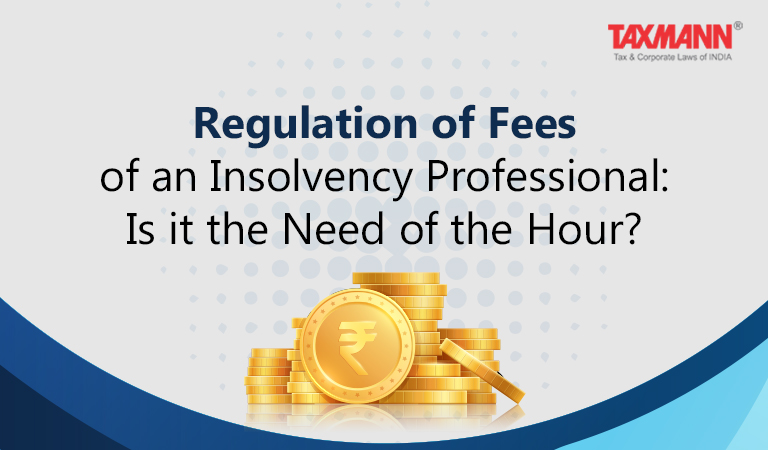Regulation of Fees of an Insolvency Professional: Is it the Need of the Hour?
- Blog|News|Insolvency and Bankruptcy Code|
- 2 Min Read
- By Taxmann
- |
- Last Updated on 12 August, 2021
[2021] 129 taxmann.com 81 (Article)
The Insolvency and Bankruptcy Code, 2016 provides that the fees and costs incurred in a corporate insolvency resolution process or liquidation process, including the fee payable to the insolvency professional, are paid in priority to the payment of all other debt. However, as these costs are an additional burden on the corporate debtor purely on account of the initiation of insolvency, it is imperative that these costs are reasonable. A few instances of exorbitant fees of Insolvency professionals came to the notice of the Insolvency and Bankruptcy Board of India and the Adjudicating Authority, and appropriate action was accordingly taken. Further, in some cases the insolvency professional and creditors were unable to come to an agreement on the quantum of fees of an Insolvency Professional and the Adjudicating Authority had to intervene. The issue, therefore, arises as to whether there is any case for regulation or fixation of fees of an insolvency professional. The article examines both the argument made in favour and against the proposal to have some regulation on fees of an insolvency professional and concludes that regulation may not be desirable, but information on fees of an insolvency professional should be readily available in a user-friendly manner to all stakeholders so that a person can correlate the fee with the performance of the professional.
I. Why fee assumes importance in a CIRP
(i) Role of Insolvency Professional: The Insolvency and Bankruptcy Code, 2016 (“Code”) provides that, on commencement of insolvency proceedings, the powers of the Board of Directors of the corporate debtor (“CD”) are exercised by the Insolvency Professional (“IP”)1 under the overall supervision of the Committee of Creditors (“COC”). The objective is to have an independent person, the IP, take charge and manage the affairs and preserve the enterprise value of the CD. The IP is therefore the key figure for the corporate insolvency resolution process (“CIRP”), he constitutes the COC, which makes major decisions during the CIRP, invites resolution plans from prospective resolution applicants, and submits the resolution plan which is compliant with the provisions of the Code and approved by the COC, to the Adjudicating Authority (“AA”) for its approval. He is therefore instrumental in giving a fresh lease of life to a dying CD
Read the Full Article
Disclaimer: The content/information published on the website is only for general information of the user and shall not be construed as legal advice. While the Taxmann has exercised reasonable efforts to ensure the veracity of information/content published, Taxmann shall be under no liability in any manner whatsoever for incorrect information, if any.

Taxmann Publications has a dedicated in-house Research & Editorial Team. This team consists of a team of Chartered Accountants, Company Secretaries, and Lawyers. This team works under the guidance and supervision of editor-in-chief Mr Rakesh Bhargava.
The Research and Editorial Team is responsible for developing reliable and accurate content for the readers. The team follows the six-sigma approach to achieve the benchmark of zero error in its publications and research platforms. The team ensures that the following publication guidelines are thoroughly followed while developing the content:
- The statutory material is obtained only from the authorized and reliable sources
- All the latest developments in the judicial and legislative fields are covered
- Prepare the analytical write-ups on current, controversial, and important issues to help the readers to understand the concept and its implications
- Every content published by Taxmann is complete, accurate and lucid
- All evidence-based statements are supported with proper reference to Section, Circular No., Notification No. or citations
- The golden rules of grammar, style and consistency are thoroughly followed
- Font and size that’s easy to read and remain consistent across all imprint and digital publications are applied








 CA | CS | CMA
CA | CS | CMA


